Table of Contents
N95 respirators, procedural masks, and surgical masks (face masks) are examples of personal protective equipment that are used to reduce the spread and transmission of airborne particles and aerosol liquids from infected hosts or environmental hazards.
In the case where you need more information between the different types of face masks, this post is designed to help you understand the verbiage and construction difference between different types of mask products.
Updated FDA Guidance on Masks for Healthcare Workers
In response to the COVID-19 pandemic, the FDA has updated its guidance on appropriate use of facemasks as personal protective equipment.
“On April 18, 2020, in response to concerns relating to insufficient supply and availability of face masks, 1,2 the U.S. Food and Drug Administration (FDA) issued an Emergency Use Authorization (EUA) authorizing the use of face masks for use by members of the general public, including health care personnel (HCP)3 in healthcare settings as personal protective equipment (PPE), to cover their noses and mouths, in accordance with Centers for Disease Control and Prevention (CDC) recommendations…”
FDA
Surgical masks are not covered within the scope of this authorization.
N95 Mask Alternatives
N95 respirators, a facemask produced by 3M, are currently in extreme shortages.
Generally these masks have been designated as essential PPE equipment for medical professionals and therefore allocated as such. The Centers for Disease Control and Prevention (CDC) does not recommend that the general public wear N95 respirators to protect themselves from respiratory diseases, including coronavirus (COVID-19).
The most common alternatives to N95 face masks are procedural and surgical masks. Below we’ll address the differences in various surgical masks and how they compare to N95s. For information on similarities and differences between N95 and KN95 masks, see our post here.
What’s the Difference Between a Surgical and Procedural Mask?
A surgical mask is a medical device regulated by the FDA. A procedural mask is a standard issue mask not generally rated for healthcare applications, but instead, routinely used to reduce transmission and intake of airborne contamination.
Read: Surgical Medical Masks ASTM Level 3 Requirements
A face mask is a device, with or without a face shield, that covers the user’s nose and mouth and may or may not meet fluid barrier or filtration efficiency levels. It includes cloth face coverings as a subset. It may be for single or multiple uses, and if for multiple uses it may be laundered or cleaned.
Surgical masks are masks that cover the user’s nose and mouth and provide a physical barrier to fluids and particulate materials and are regulated under 21 CFR 878.4040 as class II devices requiring premarket notification.
All “medical masks” will carry a classification from the American Society of Testing and Materials (ATSM). ASTM face masks standards fall within three categories ASTM Level 1, ASTM Level 2, and ASTM Level 3. The most important difference between the levels in the degree of protection against liquid splashes or higher pressure liquid. ASTM Level three masks offer the greatest amount of protection from liquid penetration while also have equal or better particle and bacterial blocking material than lower levels.
What’s the Difference Between a Premium, Surgical Style Mask and Others?
“The most common facemasks are the surgical masks but the main differences are; simple face masks are not used to prevent infectious diseases but a surgical mask should have a minimum of 80% bacteria filtration efficiency, a conventional face mask consists of one, two or three layers of flat or pleated fabric [5], usually made from paper or cotton fabric but a “surgical mask” is made of at least a three-ply layer of material like polypropylene[3]”
In considering mask alternatives, there is virtually no face mask capable of 100 filtration of ultra-fine particulates or microscopic viruses. Whereas most masks are designed for filtering particulate matter, viruses such as SARS-COVID-2 are much smaller. SARS-COVID 2 is a relatively large virus, yet it’s observed to be only 70–90 nm, about 0.07 – 0.09 micron.
For reference, a spec of dust floating in a beam of light is about 50 micron. So that’s about 500x larger than the viruses causing COVID-19.
In contrast, a HEPA filter must capture a minimum of 99.97% of contaminants at 0.3 microns in size. N95 masks are considerably less effective than HEPA filters. An N95 mask captures only 95% of very small (0.3 micron) test particles.
“The bare influenza virus is approximately 0.1 micron, but the influenza virus expelled from humans via respiratory secretions is typically much larger at 0.8 micron. (Harnish et al., “Challenge of N95 Filtering Facepiece Respirators”
To some, the difference between 95% capture and 99.97% might seem trivial, but when a single sneeze could hypothetically contain 40,000 aerosol droplets between 0.5–12 μm in diameter, let’s consider the math:
- A sneeze may produce 40,000 droplets
- One droplet may contain 3000 droplet nuclei
- Droplets X Virus Nuclei = 120,000,000
So, if we look at the hypothetical filtration of a single sneeze containing viral droplets:
99.97% filtration rate: 36,000 Virus Nuclei remain
98% filtration rate: 2.4 million Virus Nuclei remain
95% filtration rate: 6 million Virus Nuclei remain
(Filtration rates not adjusted for target particle size or effective media filtration – should not be considered a metric for actual virus load or mask efficacy)
In 2015, researchers published the first randomized controlled trial of cloth masks, and found that hospital workers in Vietnam were 13 times more likely to come down with an influenza-like illness when wearing a cloth mask rather than a disposable surgical one.
Virus Droplet Sizes and Filtration
Respiratory transfer and droplet emissions from hosts are widely studied, however, data requires some inspection, as some individuals are considered “super-spreaders”. For example, the quantity of droplets, breathing rate, air exchange rate, and even the environmental conditions will effect the distance and viability for airborne carriers.
“Droplets >5 μm tend to remain trapped in the upper respiratory tract (oropharynx — nose and throat areas), whereas droplets ≤5 μm have the potential to be inhaled into the lower respiratory tract (the bronchi and alveoli in the lungs).”
In contrast, the term droplet nuclei refers to droplets ≤5 μm in diameter that can remain suspended in air for significant periods of time, allowing them to be transmitted over distances >1 m (Stetzenbach, Buttner & Cruz, 2004; Wong & Leung, 2004).
The actual size distribution of droplets also depends on parameters, such as the exhaled air velocity, the viscosity of the fluid and the flow path (i.e. through the nose, the mouth or both) (Barker, Stevens & Bloomfield, 2001).
World Health Organization; 2009. Natural Ventilation for Infection Control in Health-Care Settings.
Are Surgical Masks Effective Against COVID?
Surgical face masks were not originally designed to protect wearers from the environment. Instead, the masks were designed to protect patients from wound contamination or infection stemming from a surgeon or healthcare provider. It was not until later that they were adopted as protective measures for healthcare providers.
This 2013 study from the Turkish Denizli Vocational School of Technical Sciences, suggests that “surgical masks do not have either adequate filtering or fitting attributes to provide respiratory protection for the wearer”.
A more recent study, published in April of 2020 by Nature Medicine, shows that surgical masks are significantly effective in reducing detectable viral loads.
“We detected coronavirus in respiratory droplets and aerosols in 3 of 10 (30%) and 4 of 10 (40%) of the samples collected without face masks, respectively, but did not detect any virus in respiratory droplets or aerosols collected from participants wearing face masks, this difference was significant in aerosols and showed a trend toward reduced detection in respiratory droplets (Table 1b)”
Nature Medicine
In a 2011 randomized clinical trial studying healthcare workers, those wearing N95 masks in healthcare environments experience respiratory infections 2X less than those wearing standard surgical masks.
If the results of the included studies represent real world scenarios, one could infer that the infections rates could be 2X more likely (surgical mask) – 13X (cloth mask) than compared to N95 masks.
As we’ll cover below, there are many concerns about the reuse of N95 masks including an increasing viral load and potential cross contamination.
Can You Reuse N95 Masks?
When properly used, evidence suggests that N95 masks are the best reductive measure against airborne transmission of airborne contaminants. But what happens when healthcare professionals are forced to reuse the same contaminated masks over extended periods and multiple shifts during the COVID pandemic?
The debate over federal organizations approving the reuse and decontamination of single use masks is contended by National Nurses United, stating overcycling a N95 mask due to limited availability could increase risk factors for healthcare workers.
Studies During Previous Pandemics
Other studies have pointed to the overwhelming reuse of N95 masks potentiating exposure to viral loads and viral transfer from masks to operators.
A 2006 study published in the American Journal of infection control evaluated this exact scenario: could the lack of availability for N95 masks encourage post-life cycle use in a way that could risk health outcomes during influenza outbreak?
- Spread of COVID via Surfaces
- SARS-CoV-2 Survival on Surfaces
- SARS-CoV-2 Plastic – Stainless Steel
- SARS-CoV-2 on Cardboard
The following information was derived based on the ability of other viruses, such as H1N1, to thrive and remain viable on various fabrics and surfaces.
“Enveloped bacteriophage can survive on the surface of an N95 respirator longer than a single patient care encounter. High levels of virus remaining on a respirator may pose a risk of virus transfer to the wearer during handling and reuse.”
“The inactivation observed demonstrates that residual virus on a respirator surface is an important factor when reuse is considered. If a respirator is used over an 8- or 12-hour shift, even 90% inactivation during that time raises the possibility that that reuse over multiple patient encounters may add additional viral load to an already contaminated respirator.”
“Therefore, decontamination of respirators is an important consideration in any reuse scenario. Studies of infectious virus reduction suggest that decontamination may be a viable option if pandemic situations or shortages make respirator reuse an alternative that needs to be considered.”
“The design of effective respirator decontamination protocols should include the intervals at which a respirator needs to be decontaminated between uses, as well as how long a respirator should be used before discarding.”
“Virus survival data is needed to model inactivation, decontamination, and recontamination to determine safe and effective reuse protocols.
“Long-term survival of respiratory viruses on the surface of N95 respirators needs to be taken into account when evaluating decontamination protocols and weighing the risks and benefits of respirator reuse for outbreak and pandemic preparedness.”
The above information about H1N1 may or may not correlate with other types of viruses. Instead, it’s a discussion element when considering the risk factors of reusing PPE outside of its original purposes.
NPR radio correspondents have reported in some cases healthcare professionals were being provided 2 N95 masks per week, which were then rotated on a 6 day cycle.
Summary: Are Surgical Masks as Effective as N95 Masks?
The simple answer is no, however there are caveats. The N95 filtering face piece respirators may not provide the expected protection level against small virions.
N95 masks are one of the best known protective measures against airborne pathogens and particulates.
Anecdotally, with reference to limited studies cited herein, a surgical mask may be up to 13X more effective than standard cloth masks, while an N95 is only 2X more effective than a surgical mask. Surgical masks and procedural masks are available, effective, and will dramatically curb the spread of airborne infection.
It is the role of each facility to conduct a risk assessment and evaluate what PPE is most effective in their specific environment.
Where Can I Purchase Facemasks Online and How Can I Avoid Scams
Ensure that you’re purchasing from a reputable distributor of facemasks with these criteria:
- Company has dedicated, on shore customer service and warehouses
- Holds ISO 9001 certification, an accredited standard that ensures complete accountability and documentation throughout the supply chain processes
- Company is well regarded by customer reviews with recent time stamps
- Company has on-shore which increase the likeliness of in-stock items and faster shipping times
- Company is established as a critical and essential business
Production Automation Corporation (PAC) is an essential supplier of manufacturing equipment, supplies, and environmental controls.
We have face masks currently in stock at warehouses across the United States. As warehouse inventory is cycled and restocked, the exact specifications may vary. Stock levels change daily. Have questions? Post your comment below. (Sí, se habla español)
Procedural Masks
- 3 Layer Mask
- PP + Spunbond Layers
- No Latex
- No Fiberglass
- Ear Loops
- Soft Lining and Breathable
KN95
- Disposable non-surgical face masks.
- Designed for everyday civilian use.
- 95% filtration efficacy
- Filters out particles, dust, droplets, etc.
- 3rd-party tested and validated
- Comfortable ear loops
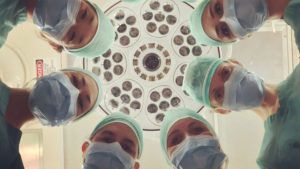
Why 3-Ply Face Masks are Meaningful Alternatives to N95 Masks
How effective are surgical masks and procedural masks as alternatives to N95 masks? Where can I find a reliable supplier of face masks?

Where to Buy Bulk 3 Ply Face Masks In Stock August 2020
Production Automation Corporation (PAC – that’s us) currently has received new inventory of in-stock procedural face masks, ready to ship.
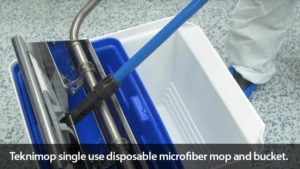
What’s the Correct Way to Wipedown a Surface? What’s the Advantage of Microfiber Wipes?
What is the proper technique for wipedown and sanitation of surfaces? Why is a microfiber wipe most effective for viruses and infection control?
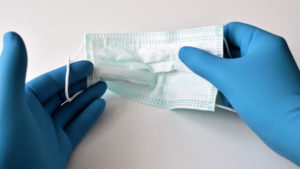
What are the Standards for ASTM Face Mask Testing?
This post will help you understand the context, performance criteria, and minimum requirements of ASTM levels in various medical masks and their respective uses fields. ASTM General Overview ASTM is the american society for testing

Types of Cleaners | Disinfectants for Industrial, Hospitals, or Medical Devices. How Are They Used?
This article defines, contracts, and compares FDA and EPA requirements for the efficacy of various chemical germicides, sterilants, and disinfectant chemicals.

Surgical Medical Masks ASTM Level 3 Requirements
This post will help you understand meaningful differences between various face mask evaluation methods and best-case use. Understanding the most common mask materials and expected performance metrics helps buyers better decide which mask is most appropriate for associated risk, cost, and wellbeing.
Related Posts
-
Face Masks in 2022: It's Time to Update Your Knowledge About Face Masks
It’s been a year since the COVID-19 pandemic started and it looks like face masks are not going away anytime soon. With the pandemic continuing, this is the year to update your knowledge about face…
-
Face Masks in 2022: It's Time to Update Your Knowledge About Face Masks
It’s been a year since the COVID-19 pandemic started and it looks like face masks are not going away anytime soon. With the pandemic continuing, this is the year to update your knowledge about face…
-
Droplets vs Airborne - Science of Airborne Droplets, Aerosols, Particles, and Face Masks
Aerosols vs Droplets - does COVID-19 spread by aerosols or droplets? Does evidence support airborne coronavirus? 15+ studies on COVID particle size, droplets, ventilation, and face masks.
-
Where to Buy Bulk 3 Ply Face Masks In Stock August 2020
Production Automation Corporation (PAC - that's us) currently has received new inventory of in-stock procedural face masks, ready to ship.
-
CleanPro PlexiGlass Shields for Food Service, Restaurants, Hanging Workstation Dividers
Production Automation Corporation (PAC) carries a range of workstation dividers, mounts, and Plexiglass shields. Every workstation and business is unique, therefore we've procured a number of different mounts and configurations for your needs. CleanPro® sneeze…
-
What's the Correct Way to Wipedown a Surface? What's the Advantage of Microfiber Wipes?
What is the proper technique for wipedown and sanitation of surfaces? Why is a microfiber wipe most effective for viruses and infection control?
-
How Do I Properly Wipe Down Surfaces in Cleanrooms and Labs?
What are the proper steps for wiping surfaces, biological isolators, and laminar flow cabinets, and excess hazardous drugs?
-
Plexiglass Sneeze Shields for Workers and Protective Dividers
Where can I find Plexiglas sneeze shields and dividers for workstations, kiosks, and checkout lines?
-
Types of Cleaners | Disinfectants for Industrial, Hospitals, or Medical Devices. How Are They Used?
This article defines, contracts, and compares FDA and EPA requirements for the efficacy of various chemical germicides, sterilants, and disinfectant chemicals.
-
Mobile Hand Washing Stations and Sinks for Manufacturing
Portable hand sinks have internal water supply and waste water storage. The standalone unit with powered pump supply requires no additional plumbing, drains, or inlets.

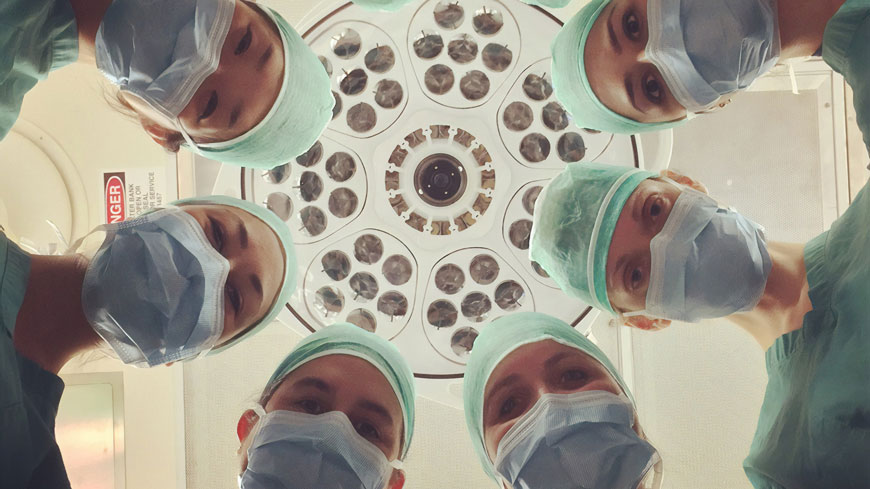
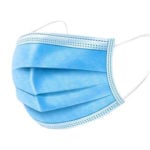

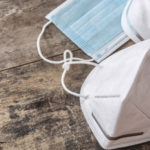

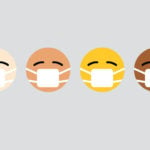

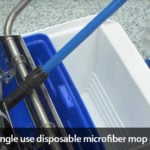



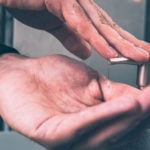



6 thoughts on “Why 3-Ply Face Masks are Meaningful Alternatives to N95 Masks”
it’s better to leave the N95 masks to those that really need it (the doctors and people in the first line). The rest of us will be just fine with surgical masks or cotton-made with 3 layers (for occasional use)
Face masks have become such a hot topic in the current coronavirus outbreak. Fears over infection and illness have led people to hoard masks, but it is advisable to reserve necessary protective equipment for our medical superheroes and front-line workers who put their lives in danger to treat affected ones. 3-ply daily disposable face masks could be an effective option to halt large particles and respiratory droplets such as sneezes and coughs from entering your mouth. It is useful for individuals stepping out of their homes or when in a specific risk-environment to stay away from contamination as much as possible. In places where there is a high risk of getting infected, it is good to use a disposable mask to mitigate exposure to smoke, dust particles, germs, virus, and disease-causing factors.
3-ply daily disposable face masks can protect wearers’ nose and mouth against contact with splashes, droplets, and sprays that may contain infection. It is advisable to wear this mask in risky areas to reduce exposure to bacterial and viral contaminants. Wearing and removing this gear carefully may help to protect you and the health of others around you from transmitting or contacting any hazards.
Nice information thanks explaining about the Surgical Masks and N95 Mask Alternatives. good stuff
thank you for sharing this
You really made a good point here. If we ever run out of N95 masks, we definitely have good alternatives
Thanks for explaining that surgical masks are common alternatives to N95 face masks. My wife is pregnant and we are extremely worried about her getting COVID-19. I’ll order some masks online somewhere so I can get them in bulk.
Comments are closed.